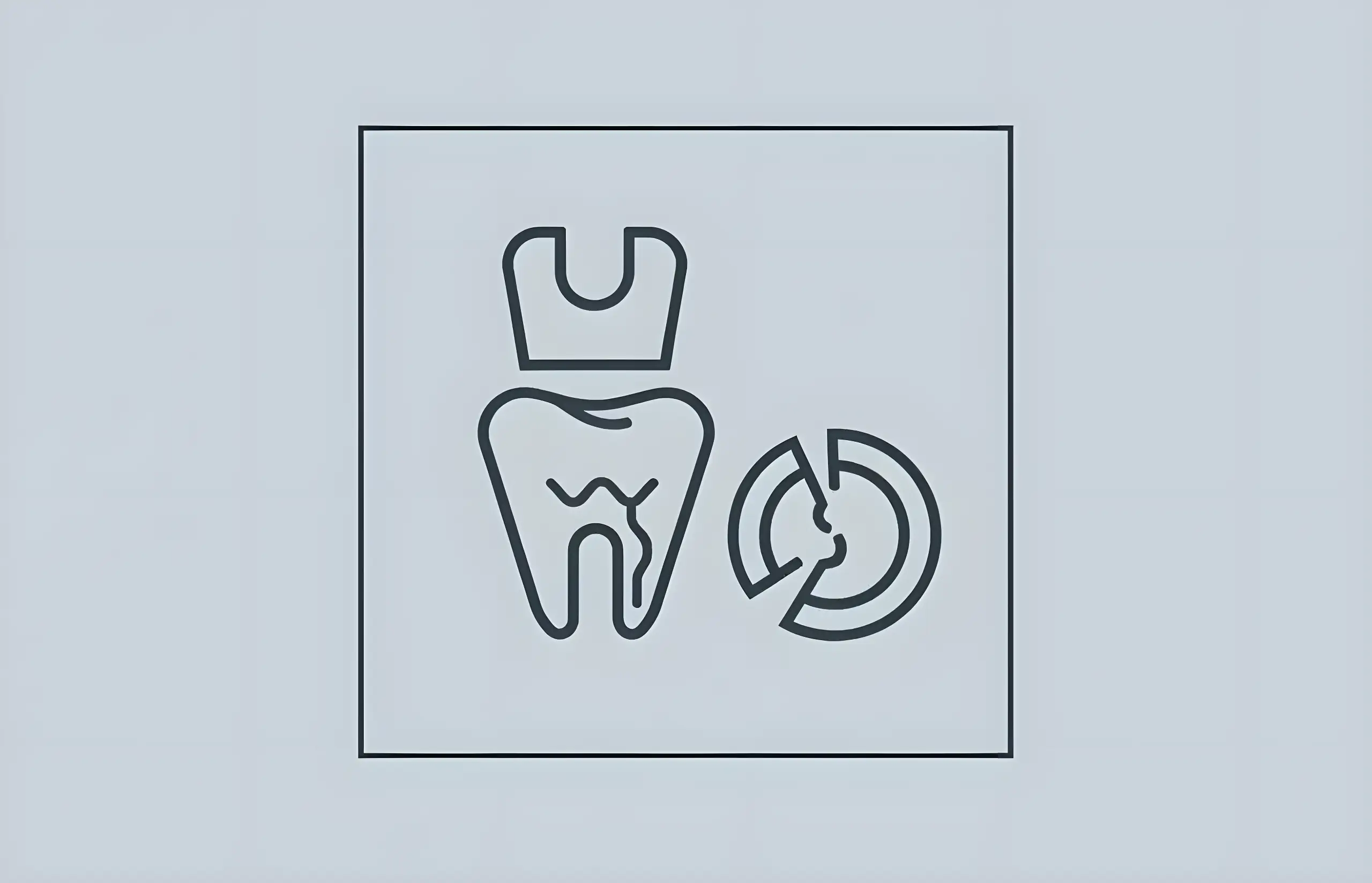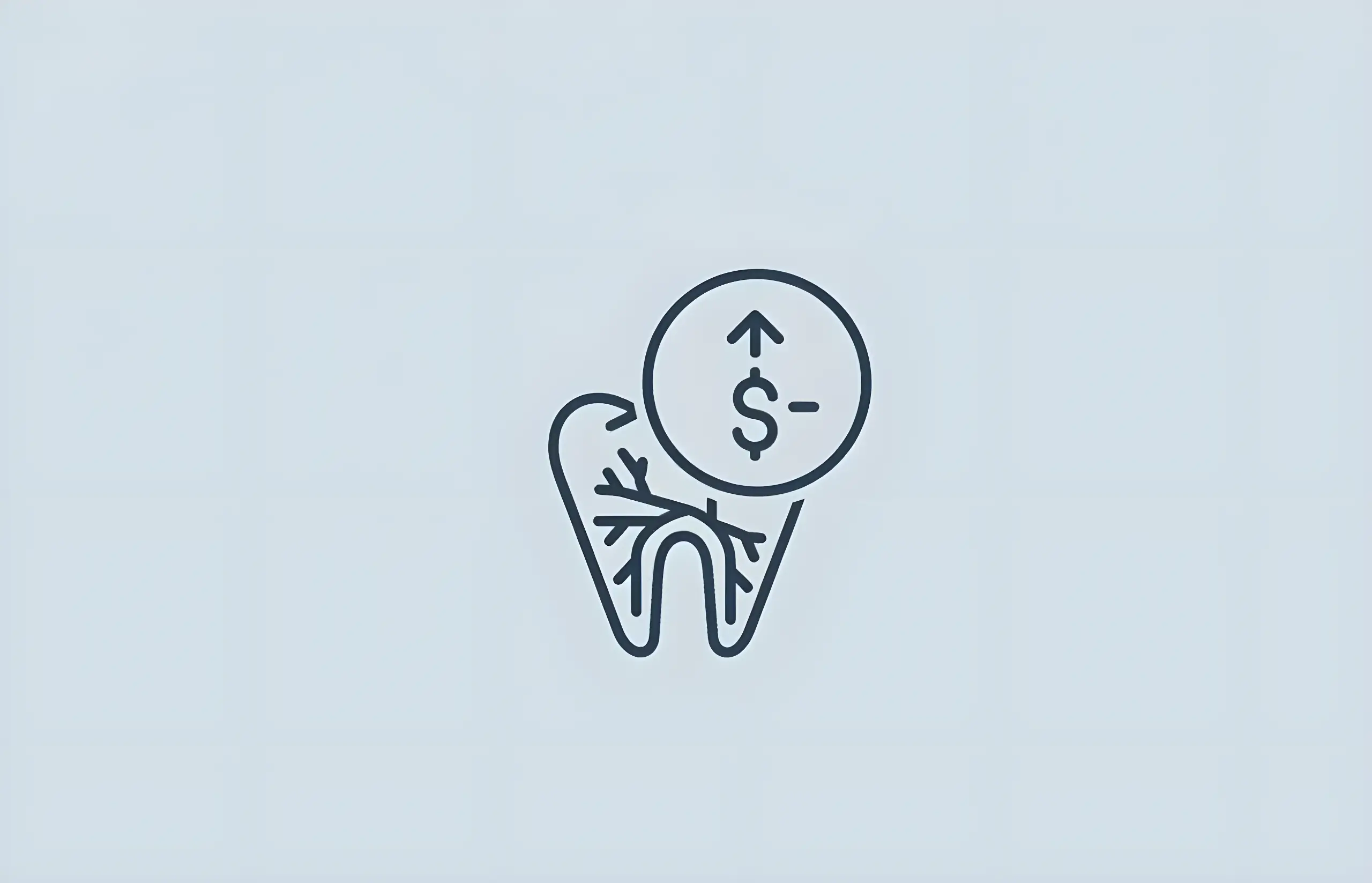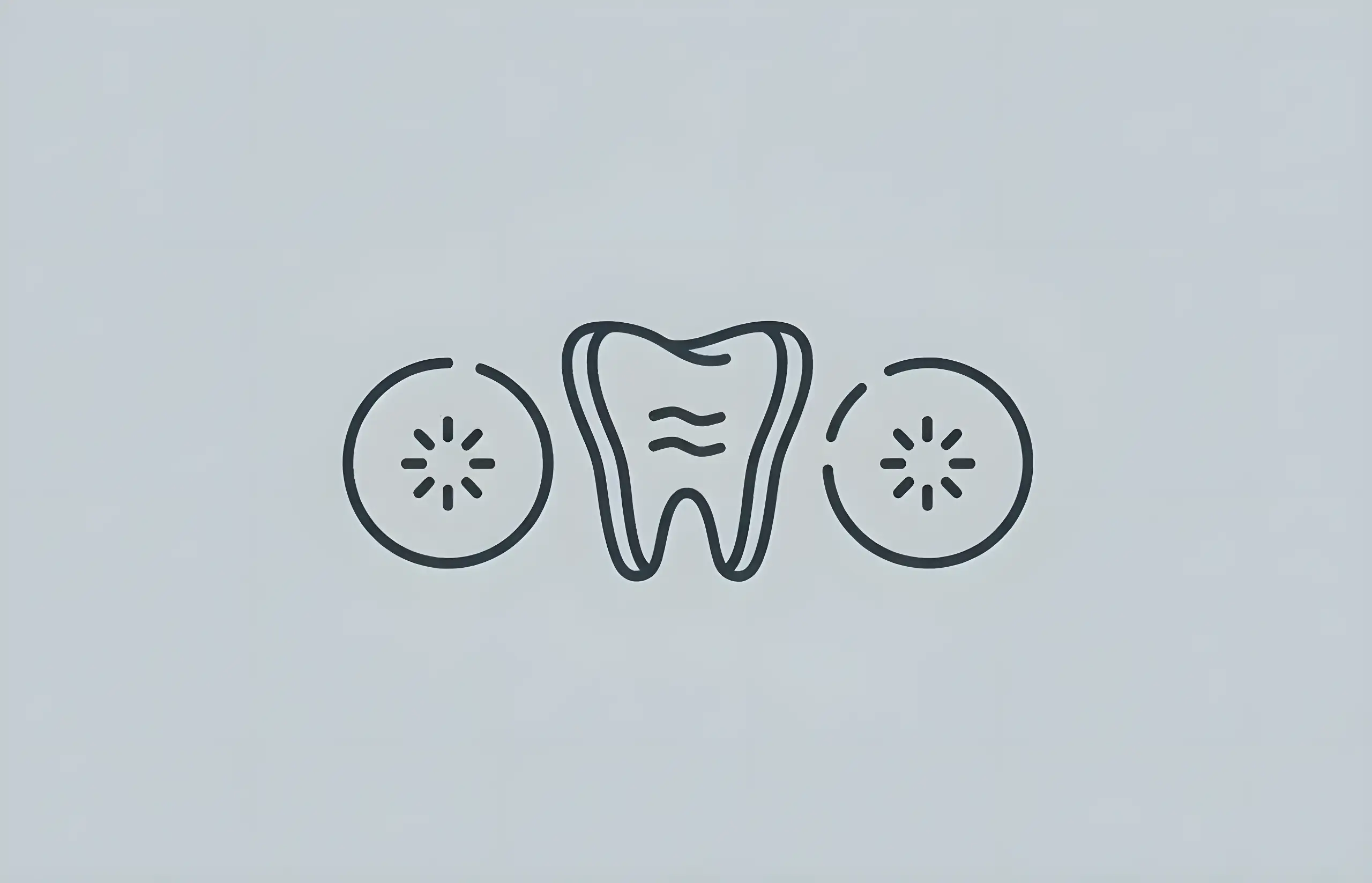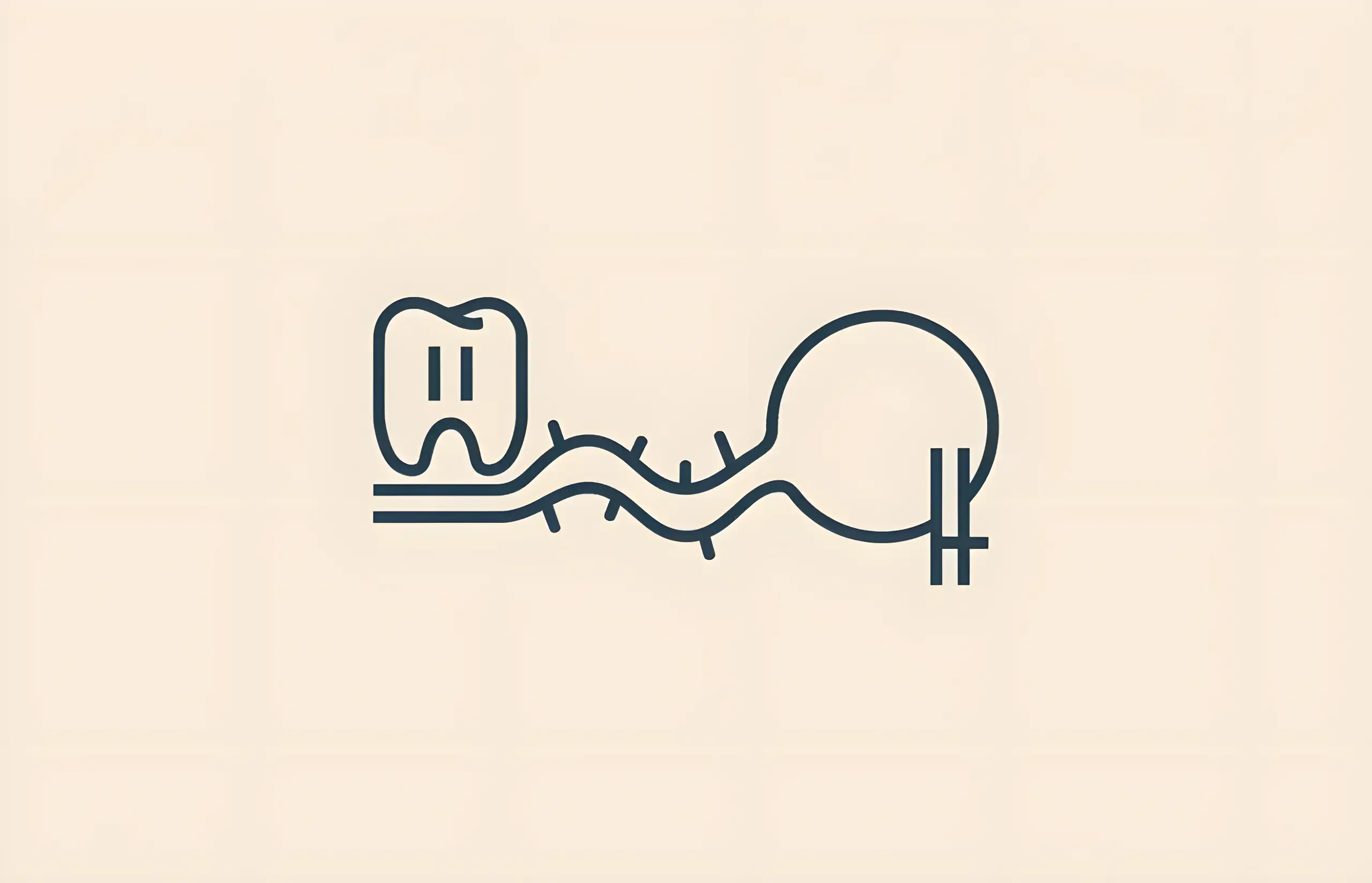It is a hot summer's day, and you just finished a run around the block under the scorching sun. You reach for a cold glass of water and gulp it down but instantly regret it.
Instead of experiencing an instantaneous cool relief, you find yourself wincing as a sharp shooting pain radiates through your jaw. Sadly, your pain is shared by millions.
Research shows that dentin hypersensitivity affects between 11.5% and 33.5% of the population, with substantial variation depending on diagnostic criteria and populations studied. People plagued with sensitive teeth find themselves unable to enjoy their favorite treats as a result of the discomfort. What could be their prognosis?
What Is Tooth Sensitivity?
Some people are wary of consuming cold items. Any shift in the temperature of their food, drink, or even air, results in sudden sharp pain in one or more teeth. This discomfort in your teeth, triggered as a result of external stimuli, is tooth sensitivity.
Tooth sensitivity, clinically known as dentin hypersensitivity, occurs when the protective layer of enamel on the tooth wears down and exposes the less dense layer of dentin. Dentin contains microscopic tubules—tiny channels that connect directly to the tooth's nerve center. Once the tooth loses the protection of the hard enamel, these tubules become exposed to external stimuli. When cold substances contact the exposed dentin, fluid movement within these tubules triggers nerve response, causing the characteristic sharp pain.
Research indicates that for dentin to become hypersensitive, two conditions must be met: the dentin must be exposed (typically through enamel loss or gum recession), and the dentinal tubules must be open to external stimuli and patent (open) at the pulp. This leaves the nerves of your tooth exposed and vulnerable to irritation.
The Root Causes of Sensitivity
Let's get to the bottom of why you may be suffering from tooth sensitivity. Research has identified several factors that contribute to this prevalent condition, which predominantly affects individuals aged 30-40 years, with higher incidence among women.
Tooth Decay or Disease
Tooth decay or a cavity is the result of plaque formation on the surface of the tooth. Plaque is a sticky bacterial film that forms on the teeth after the consumption of food, especially those rich in carbohydrates.
Our mouth is home to many colonies of bacteria. These bacteria thrive off the sugars you eat and produce acid. The acid gradually erodes your enamel, eventually resulting in tooth decay. Plaque can also attack your gums and cause periodontal diseases.
Once tooth decay or gum disease sets in, it causes sensitivity to cold. Studies show prevalence rates ranging from 5% to 85% for non-carious cervical lesions, with sensitivity affecting 2-8% to 74% of patients depending on assessment methodology.
Aggressive Brushing
Sometimes one can get aggressive with their brushing routine. Either you are taking out the stress of the day on your poor teeth, or you are trying to get rid of the unsightly plaque because this is the only way you know how to.
However, such a move does more harm than good. Constant aggressive brushing results in the premature wear down of the protective enamel layer around the teeth. This layer does not have the ability to repair itself, leaving your teeth exposed to further harm.
Research provides compelling evidence of brushing technique impact: medium and hard toothbrushes show substantially higher odds of increased sensitivity versus soft brushes, with medium brushes demonstrating approximately 135 times greater likelihood of sensitivity. Excessive brushing frequency (more than twice daily) also correlates with heightened sensitivity, particularly when combined with abrasive products.
With the enamel exposed, it reveals the underlying dentin layer. This layer is directly linked to the nerve that causes pain. So every time you intake cold food or drinks, you are setting yourself up for pain.
Product Overuse
Our obsession with pearly whites results in our wading into the arena of teeth-whitening products. Regular use of these products can contribute to tooth sensitivity.
Brushing with a hard toothbrush, using an abrasive toothpaste, or the long-term use of certain alcohol-based mouthwashes are also known to make you vulnerable to sensitive teeth. Research indicates that abrasive toothpaste formulations contribute to sensitivity, while fluoridated options provide protective benefits.
Teeth Grinding
Some people are prone to grinding their teeth when anxious and under stress or even in their sleep. It is known as bruxism. There is a general lack of awareness when teeth grinding occurs during snooze time. The tell-tale signs of its occurrence are a person consistently waking up with a tender jaw or a headache.
Grinding on a regular basis can result in the wear down of the teeth. Research shows that bruxism may lead to cracks or fractures in teeth, with enamel wearing away under excessive force. The grinding forces involved are substantial—when bruxism is present, biting pressure can increase to the maximum biting force of 200 to 300 pounds of pressure, described as "enough to crack a walnut."
Once cracks are formed in the protective layer of the enamel, it makes the teeth vulnerable to cold food and drinks. Clinical crown damage can significantly thin the enamel structure, exposing the underlying dentin, which is softer and darker, increasing the risks of sensitivity, decay and discoloration.
Receding Gums
Gum recession is a gradual process where the protective gum tissue pulls away from the margin of the teeth exposing the teeth and their roots.
While there are multiple causes for gum recession, the most common cause is periodontal or gum disease. Research identifies gingival recession as the primary cause of dentin exposure and a major predisposing factor for dentin hypersensitivity.
Tooth sensitivity is one of the first signals of a gum recession problem. Once the nerve endings of the teeth have been exposed, any contact with cold substances can result in jarring pain or discomfort.
Cracks in Tooth
Your sharp shooting pain may also be the result of a cracked tooth. Brittle teeth or grinding your jaw may crack a tooth. A crack in the tooth exposes it to bacterial buildup, which eventually leads to sensitivity.
Studies show that canines and premolars experience greater sensitivity than other teeth, with canines tending to show the first visual signs of bruxism because they are longer and more pointed.
Worn-down Filling
As time passes, dental fillings or crowns tend to weaken and crack, providing bacteria with an access path to the inner crevices of the tooth. It eventually exposes the surface of the roots and causes sensitivity.
Highly Acidic Foods
Excessive consumption of acidic food and drinks results in the wear and tear of tooth enamel and the gum line. This is a common trigger for teeth sensitivity.
Research indicates that acidic dietary components and erosive agents are significant etiologic factors that have been underestimated by dentists in clinical practice. The prevalence of dental erosion is thought to be increasing due to the wide availability and frequent consumption of acidic drinks.
Dental Procedures
It is common to face temperature sensitivity following any dental procedure such as a root canal, dental extraction, cleaning, filling, crown placement, etc. The sensitivity tends to be temporary in most cases, typically resolving within 48 hours.
What Are the Treatment Options?
While the pain is temporary, frequent triggers and the inability to enjoy the finer things in life can leave a person frustrated. Is there a way around it?
Of course! Treating tooth sensitivity is entirely possible. Once the root cause of the sensitivity has been determined, appropriate treatment can be applied to reduce pain and discomfort. Research emphasizes that etiologic factors must be addressed before implementing treatment strategies for optimal outcomes.
These are some of the potential treatment options available to you.
Avoidance
The first order of business when dealing with sensitive teeth is to avoid the thing that is causing discomfort. If cold foods and drinks are making you wince, then stay away from them for a while.
If you find the idea of staying away absolutely horrendous, you can use a straw to sip your cold drinks and savor your ice cream slowly instead of chomping down on it.
Additionally, reducing or eliminating the consumption of highly acidic foods and beverages will also provide you with some reprieve from the sensitivity.
Soft Brush
Trade in your hard toothbrush for one with soft bristles. A soft toothbrush designed for sensitive teeth will help reduce irritation and will prevent further damage to your enamel.
Research demonstrates that combined brushing techniques with soft brushes show protective effects, reducing sensitivity likelihood substantially compared to standard methods with harder brushes. Additionally, educate yourself on the proper technique of brushing your teeth and tamp down on the aggressive routine.
Sensitive Paste
The market is flooded with tubes of toothpaste for sensitive teeth. Get rid of your abrasive paste and get a dentist-recommended paste to treat your teeth. Research shows that fluoride toothpaste demonstrates modest benefits when combined with tubule-blocking agents such as different metal ions, potassium, and oxalates. With continuous and proper use over 2-4 weeks, you will find your sensitivity symptoms taking a backseat.
Mouthguard
To prevent teeth grinding from progressing further, get a mouthguard as protection for when you sleep. A visit to the dentist's office will help you select the right option.
While conscious, avoid triggers that cause you to clench your jaw and practice stress-relieving techniques.
Dental Restoration
A tooth decay, cracked tooth, or cracked filling will need immediate attention to prevent further deterioration. A dentist will treat or repair the affected tooth accordingly.
However, following a dental procedure, you will not find immediate relief to the sensitivity, as mentioned above. It typically takes a few weeks to return to normalcy. Until then, abide by the dentist's post-procedure instructions.
Fluoride Treatment
The aches of teeth sensitivity can be reduced with the help of fluoride. Fluoride will act as the defense line of your teeth against bacteria.
Research demonstrates that professional fluoride treatments are highly effective: fluoride in solution, gel, and varnish provide instant and long-term relief of dentin and bleaching hypersensitivity. These professional applications prove more effective than at-home products.
For subjects at high risk with active root caries lesions, higher concentration fluoride toothpaste containing 5,000 ppm F, frequent fluoride mouth rinsing with 0.025–0.1% fluoride solution, and topical application of fluoride varnish two to four times a year can be recommended.
Since there are many fluoride treatments available in various forms, such as gel, rinse, varnish, and foam, your dentist will help you select the right fit for you.
Scaling
Scaling is a routine dental procedure where the plaque buildup around your teeth undergoes a deep cleaning. A regular scaling will ensure that the deposits do not lead to tooth decay. It also helps maintain healthy gums.
As mentioned above, a certain level of sensitivity will be experienced post-procedure. It is expected to last 48 hours.
Root Canal
A root canal is a dental restoration treatment performed when tooth decay runs deep, causing an infection or inflammation. The treatment is aimed at providing relief from the pain without extracting the tooth. It can also be done for a cracked tooth.
This restorative treatment weeds out the damaged nerve and pulp of the tooth. The space is then refilled, and a dental crown is planted on the treated tooth for protection.
Gum Graft
A gum graft surgery is performed to rectify the ill effects of gum recession and gum disease. A healthy piece of tissue from your mouth is borrowed for the procedure.
If tooth sensitivity is the direct result of gum recession, a gum graft will help eliminate the same while giving you your healthy smile back.
Get on the Road to Recovery
Sensitive teeth should not stand in the way of your right to enjoy your meals (cold or hot). The first step towards the road to recovery is getting proper consultation.
Research confirms that dentin hypersensitivity represents a persistent clinical problem that poses significant challenge for clinicians and affects quality of life. However, with proper diagnosis and treatment, symptoms can be effectively managed.
Once you have resolved the case of tooth sensitivity and sought treatment, you can prevent its recurrence by following the doctor's instructions to the T.
Keep a steady course of dental hygiene with soft-bristled brushes and proper technique, maintain consistent follow-ups with your doctor, avoid acidic foods and aggressive brushing, and practice avoidance of temperature extremes wherever possible. Remember that enamel loss is irreversible, making prevention and early intervention essential for long-term oral health.
Sources and References
-
[1]
Dentin Hypersensitivity: Etiology, Diagnosis and Treatment; A Literature ReviewJournal of Dentistry (Shiraz)https://pmc.ncbi.nlm.nih.gov/articles/PMC3927677/
-
[2]
Prevalence of dentin hypersensitivity: Systematic review and meta-analysisJournal of Dentistryhttps://pubmed.ncbi.nlm.nih.gov/30639724/
-
[3]
The role of fluoride in the preventive management of dentin hypersensitivity and root cariesClinical Oral Investigationshttps://pmc.ncbi.nlm.nih.gov/articles/PMC3586140/
-
[4]
Factors Influencing Tooth Sensitivity: Insights From the Hospital Universiti Sains Malaysia Using Bootstrap-Enhanced Ordinal RegressionCureushttps://pmc.ncbi.nlm.nih.gov/articles/PMC11326452/
All sources accessed and verified on . Medical information reviewed for accuracy and compliance with current guidelines.
Related Articles

How to Dull a Sharp Tooth
Emergency guide to temporarily dulling a sharp broken tooth at home using filling material, dental wax, or chewing gum until you can see a dentist

How to Stop Sensitive Teeth Pain Immediately
Comprehensive guide to understanding tooth sensitivity causes and effective home remedies to relieve pain quickly

Root Canal and Crown – Costs & Information
Learn about root canal treatment and crown placement including procedure details, benefits, survival rates, and costs in the UK

Root Canal Treatment – Costs and Information
Comprehensive guide to root canal treatment including what it is, the procedure, costs in the UK (NHS and private), and who needs endodontic therapy

Sensitive Teeth After Veneers
Understanding causes, treatment options, and what to expect when experiencing tooth sensitivity after veneer placement

Sore Gums: Causes & Treatments
Comprehensive guide to understanding sore and painful gums, including causes like gingivitis, periodontitis, thrush, hormonal changes, and evidence-based treatment approaches

How Much Does Teeth Cleaning Cost?
Comprehensive guide to teeth cleaning costs in the UK, NHS pricing bands, scale and polish procedures, dental hygiene benefits, and professional teeth cleaning information
About The Dental Guide
The Dental Guide is a trusted online resource providing evidence-based information about dental health, treatments, and procedures. Our content is created and reviewed by qualified dental professionals to help you make informed decisions about your oral health.
Our Mission
- Evidence-based dental information
- Expert-reviewed content
- Clear, accessible explanations
- Latest treatment options
- Patient-focused guidance
Editorial Standards
- GDC-registered dental professionals
- Peer-reviewed sources
- Regular content updates
- Medical accuracy verification
- Transparent authorship
Important Notice
The information on The Dental Guide is for educational purposes only and should not replace professional dental advice. Always consult with a qualified dentist for diagnosis and treatment recommendations tailored to your individual needs and circumstances.
Medically Reviewed
Reviewed by Dr. Nasim Mechoui , BDS (Bristol)
Share this article
Comments & Discussion
Have questions about dental implants? Share your thoughts or experiences.
